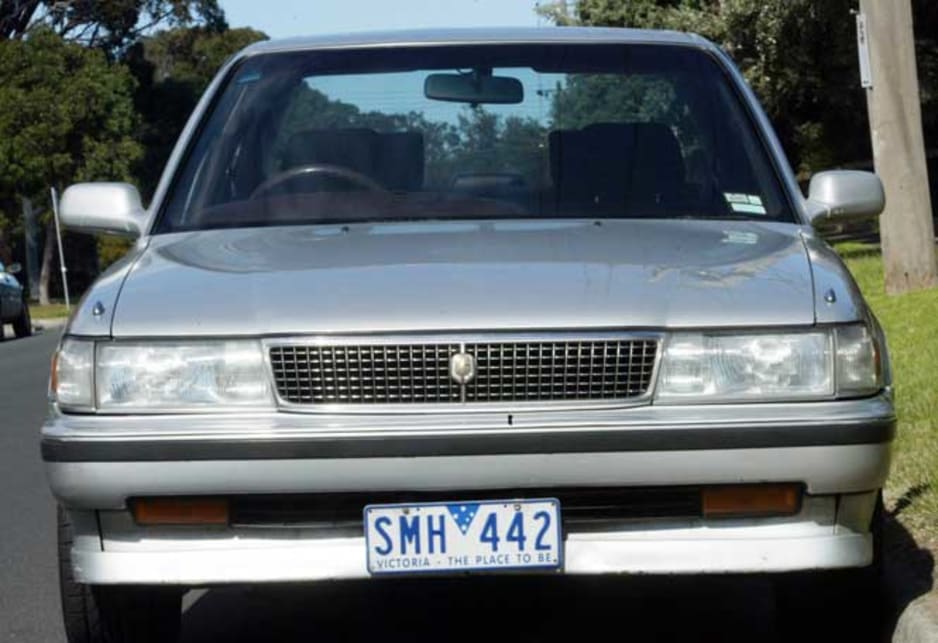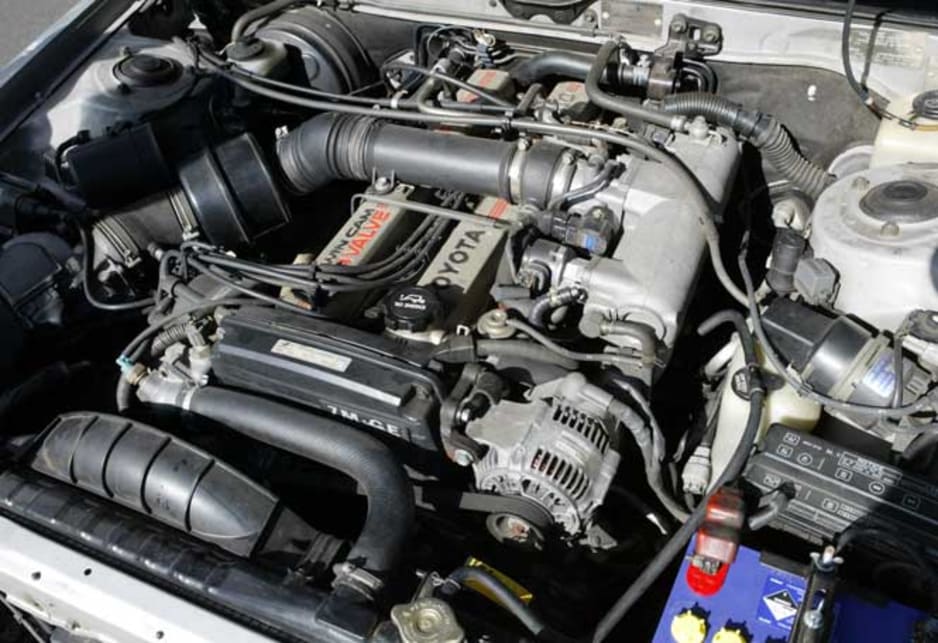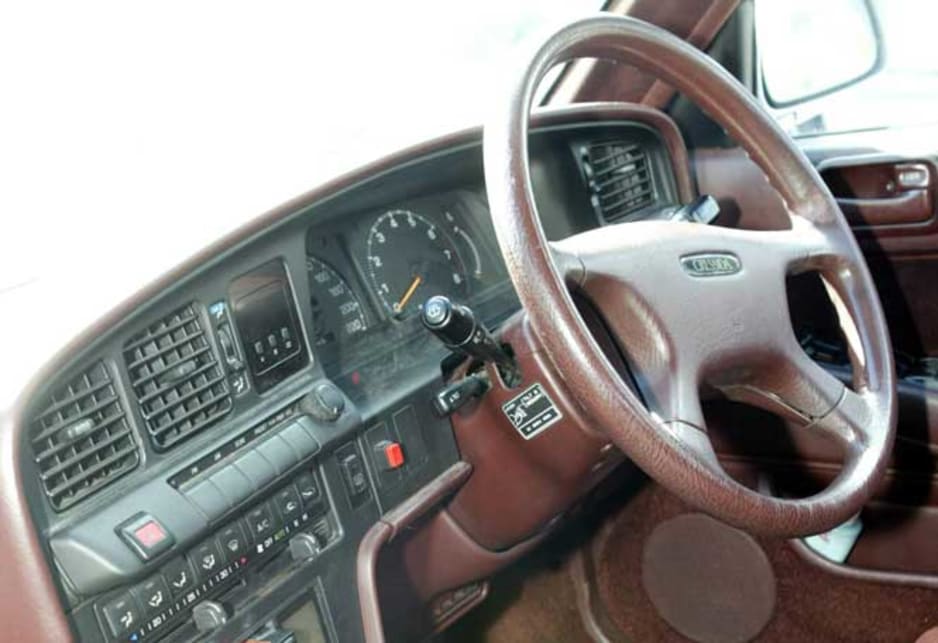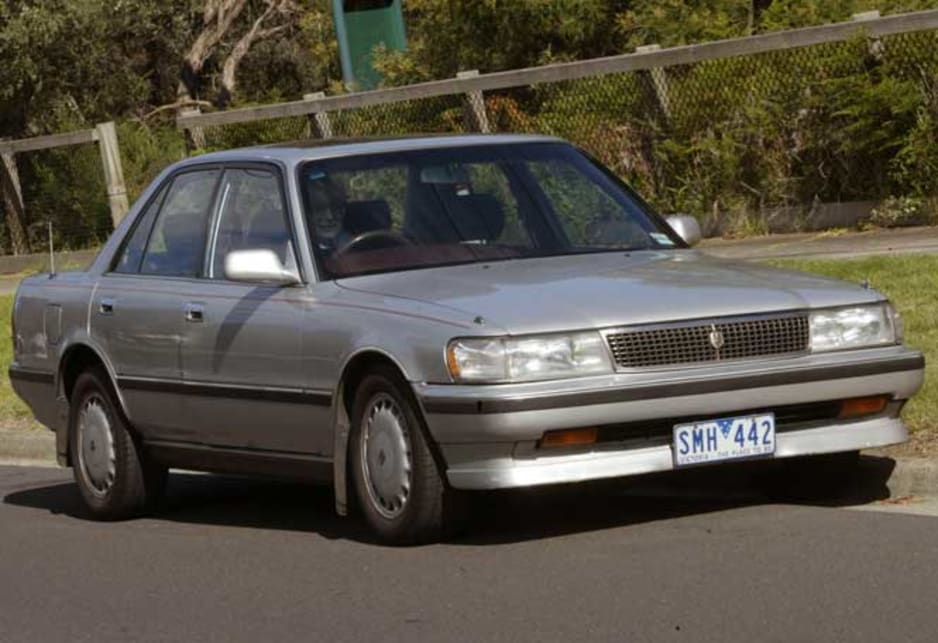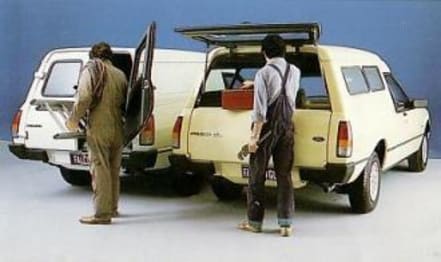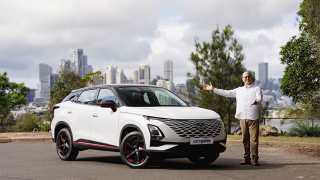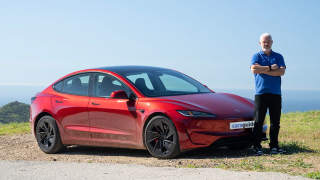
Toyota Cressida review: 1988-1993
- Toyota Cressida
- Toyota Cressida 1988
- Toyota Cressida 1989
- Toyota Cressida 1990
- Toyota Cressida 1991
- Toyota Cressida 1992
- Toyota Cressida 1993
- Toyota Cressida Reviews
- Toyota Reviews
- Toyota Sedan Range
- Sedan
- Toyota
- Used Car Reviews
- Buying tips
If you’re a car buyer who lets their emotions run rampant it’s unlikely Toyota figures prominently on your shopping list, but if you’re type to shackle your emotions and rely on logic the Toyota will be at the top of the list.
Toyota is often accused of building boring cars, but anyone who cares to delve beneath the bland skin of most Toyotas will find well engineered, well built, reliable cars that keep on going long after the emotional appeal of others has died.
The Cressida is just such a car, with bland styling concealing a mechanical masterpiece.
MODEL WATCH
The last Cressida was sold here between 1988 and 1993. If you closed your eyes for a moment and listened while someone read you the Cressida’s specs you could be forgiven you were hearing the specs of a traditional Australian big car.
A large family car with roomy accommodation for five adults, power from a straight six-cylinder engine, and driving through the rear wheels. It could have been a Commodore or a Falcon, but open your eyes and you immediately knew it wasn’t from Holden or Ford.
The bland styling was the give away. It was a basic three-box design, with straight lines, softened only slightly by smoothed edges.
It was beneath the skin that the Cressida shone. With a fuel-injected twin cam 3.0-litre straight six belting out 142 kW at 5600 revs, along with 254 Nm at 4400 revs, the big Toyota had plenty of get up and go.
When needed it would race to 100 km/h in a little over 10 seconds, and cover the standing 400-metre sprint in about 17.5 seconds.
It was quick, but there was much more to the Cressida than speed across the ground. The engine never felt fussed at any time, it was superbly smooth, and returned quite good fuel consumption. Tests at the time had it returning around 10.5 L/100 km on the highway and some two litres more when driven around town.
The four-speed electronic auto transmission was an important part of the equation. A torque control compensator cut torque while shifting, making shifts silky smooth, and a lockup converter aided the quest for fuel efficiency.
Improved body stiffness delivered a more stable platform on which Toyota’s chassis engineers could build a decent handling package. Revisions to the front suspension, and the introduction of a new double wishbone independent rear suspension improved the Cressida’s chassis dynamics, without compromising the big Toyota’s smooth ride.
Larger front discs, bigger pads and a revised pedal ratio boosted the Cressida’s braking performance.
Inside there was comfortable, supportive seating for five with plenty of room front and rear for adults. Out back there was a good-sized boot.
Standard equipment in the GL included power windows, central locking, power steering, and a decent sound system. Air-con was an option.
Add to that alloy wheels, colour coded bumpers and cruise, and you had a GLX, while the Grande boasted ABS, limited-slip diff, leather trim, CD player, and climate control air-con.
ON THE LOT
The Cressida is now reaching the end of its useable life on the road, the youngest now more than 10 years old. Dealers rarely handle the Cressida, so the best place to look is the newspaper classifieds or the net.
For the GL, sold from 1988 to 1990, pay no more than $7500. Pay up to $11,000 for the GLX, which sold up to 1993, and $12,500 for the Grande, which sold from 1990 to 1993.
IN THE SHOP
Shop carefully when buying a Cressida, but if you do take care you can find a good car that will continue to provide good service for many years yet, even if it’s already showing high mileage.
Check for a service record. It’s important with a car of this age to find out how often it has been serviced, and the date and mileage of its last service. Cars are often neglected when they reach the Cressida’s age and it’s important to know this before handing over your cash.
Regular oil changes reduce the accumulation of sludge in the engine, which can ultimately strangle an engine to death.
The Cressida’s cam timing belt needs changing regularly. Toyota recommends replacing it every 90,000 km, so it’s important to know when it was last changed.
Cylinder head gaskets can be a problem once the mileage climbs about 100,000 km. Check service records for confirmation that the coolant has been changed according to Toyota’s recommendation, and the Toyota recommended coolant has been used, although this doesn’t guarantee there won’t be a problem.
Oxygen sensors are also a problem, and expensive to replace.
The auto transmission can be a problem as the mileage climbs into the mid-100,000 kay region. Cost to rebuild is around $2000.
Generally the body and paint stand up well, although it’s worth looking closely for rust around the rear body pillars.
Finally, parts for the Cressida are generally expensive.
OWNERS’ VIEWS
Peter Hague switched from an elderly Commodore to his 1989 GLX a year ago. It has now done nearly 260,000 km and he says it’s terrific. In the time he’s owned it he’s replaced a starter motor, the bonnet struts need regassing, and the driver’s power window no longer works.
Geoff King has owned several Cressidas over the years, and currently drives a 1990 model, and rates them all good, well-built cars. He says the engine has a propensity for doing head gaskets at about 100,000 km.
Ben Jensen’s first car was a 1991 Grande, which he says is fantastic on fuel and brilliant to drive. The only problems he’s had have been a slight gearbox leak, and a slight differential noise between 90-95 km/h.
Steve Williams’ 1991 Cressida has covered only 80,000 km. He says it’s a pleasure to drive, the body is strong, the 3.0-litre engine and auto transmission provides plenty of smooth power, and the suspension and brakes are excellent. He’s had to replace a head gasket.
Steve Kioumis has owned two Cressidas and has replaced the head gasket, and has had to rebuild the transmission at 125,000 km. Despite the setbacks he says he appreciated the Cressida’s comfort and performance.
Harold Seifman is an NRMA technical consultant who owns a 1993 Grande. It has travelled 117,000 km, and has been regularly serviced, with the oil and filter changed every 5000 km. The problems he has encountered have been a cylinder head gasket failure at 66,000 km, and a leaking rear heater hose leaking at 105,000 km. Apart from those problems it has been super reliable, is smooth, comfortable, quiet, and a pleasure to drive, returning about 10 L/100 km on the open road, and 15-17 around town. Oil consumption is about two litres in 5000 km.
Jenny Halloran bought her Grande new in 1992. It now has 217,000 km on the clock, and apart from some minor oil leaks and some work on the air con, she says it has been very reliable, although now starting to use oil.
LOOK FOR
• solid build quality means few body problems
• twin cam six prone to blown head gaskets
• superbly smooth ride
• brisk performance
• check service record
RIVALS
VN/VP Commodore – 1988-1993 – up to $8000
Nissan Skyline – 1986-1990 – up to $5000
EA/EB Falcon – 1988-1992 – up to $6000
THE BOTTOM LINE
Great car in its time despite bland styling, but age now means it’s getting hard to find a good one.
RATING
50/100
Pricing
| Year | Price From | Price To |
|---|---|---|
| 1993 | $3,850 | $6,270 |
| 1992 | $3,850 | $6,270 |
| 1991 | $3,850 | $6,270 |
| 1990 | $3,190 | $6,270 |
| 1989 | $3,190 | $5,610 |
| 1988 | $3,190 | $5,610 |
Pricing guides
Range and Specs
| Vehicle | Specs | Price* | |
|---|---|---|---|
| GL | 3.0L, ULP, 4 SP AUTO | $3,190 – 4,950 | 1988 Toyota Cressida 1988 GL Pricing and Specs |
| GLX | 3.0L, ULP, 4 SP AUTO | $3,850 – 5,610 | 1988 Toyota Cressida 1988 GLX Pricing and Specs |
| GLi | 2.8L, ULP, 4 SP AUTO | $3,190 – 4,950 | 1988 Toyota Cressida 1988 GLi Pricing and Specs |
| GLX-i | 2.8L, ULP, 4 SP AUTO | $3,190 – 4,950 | 1988 Toyota Cressida 1988 GLX-i Pricing and Specs |
Other cars to consider
$3,190
Lowest price, based on third party pricing data


